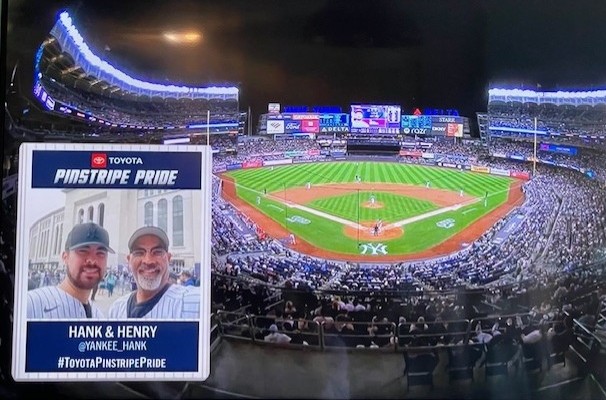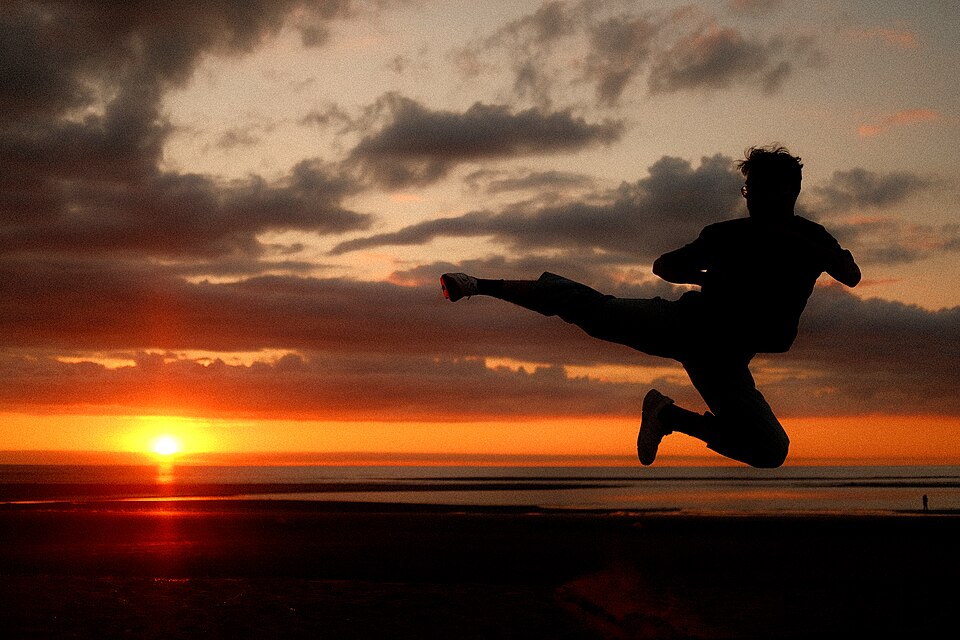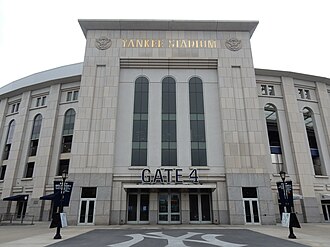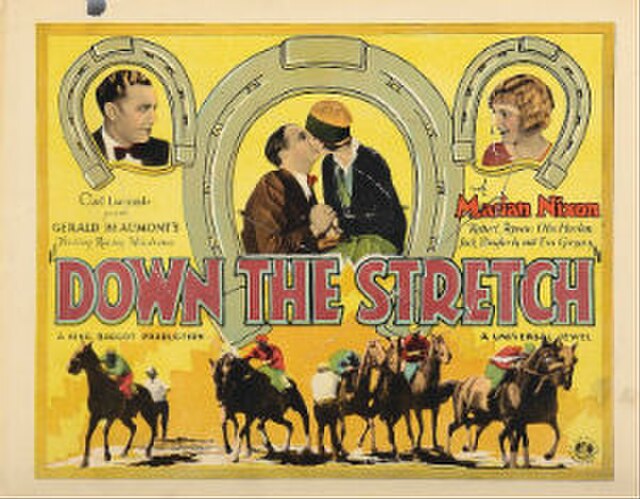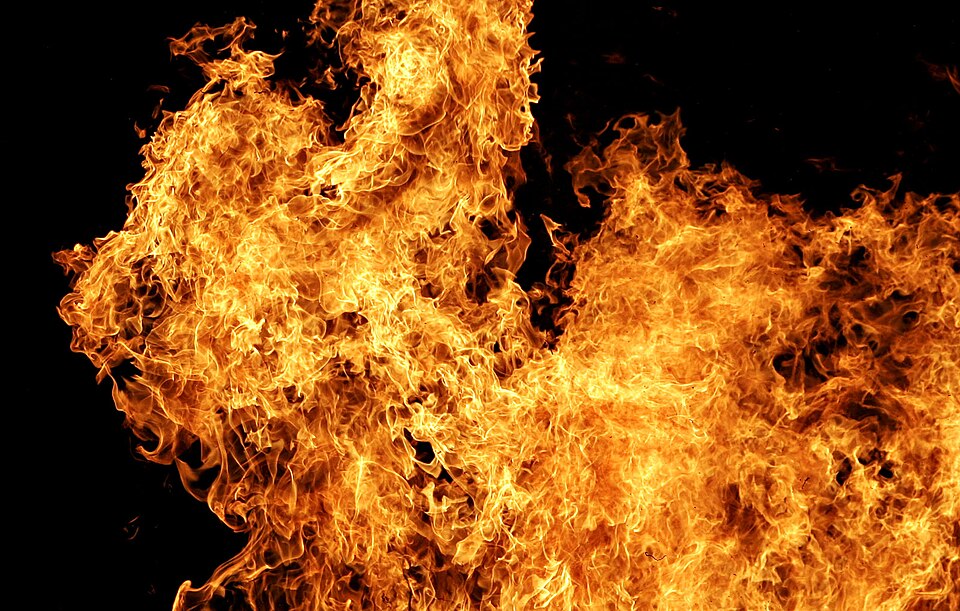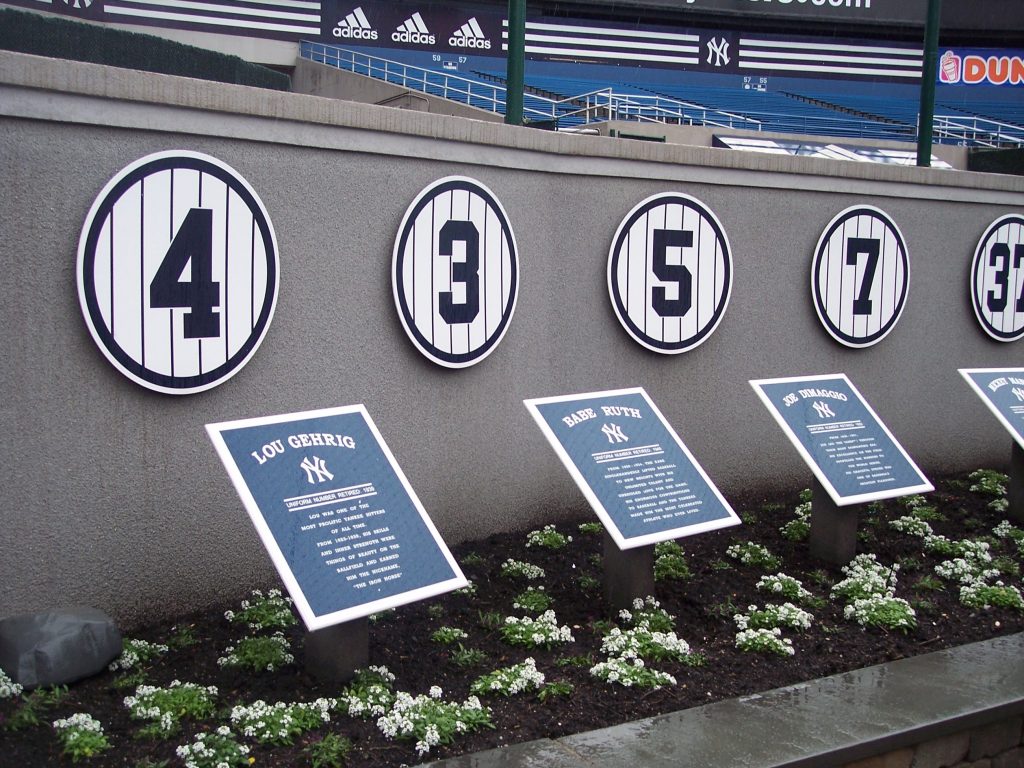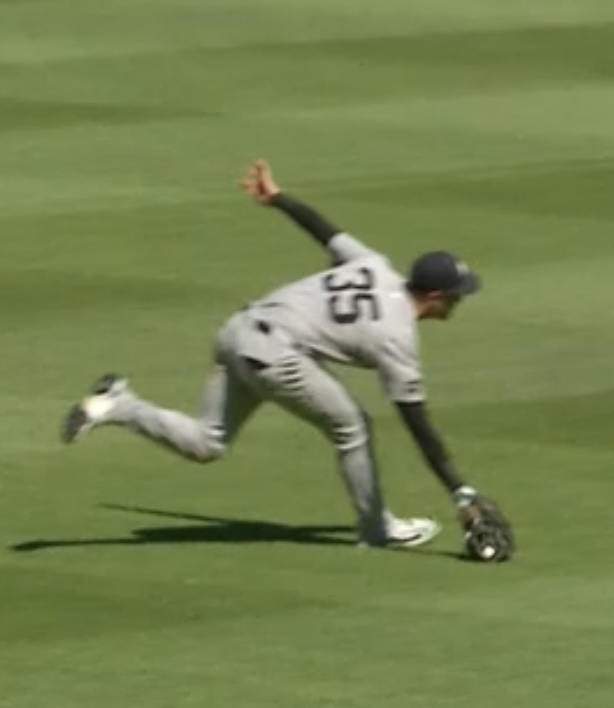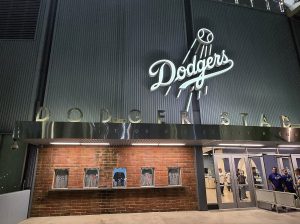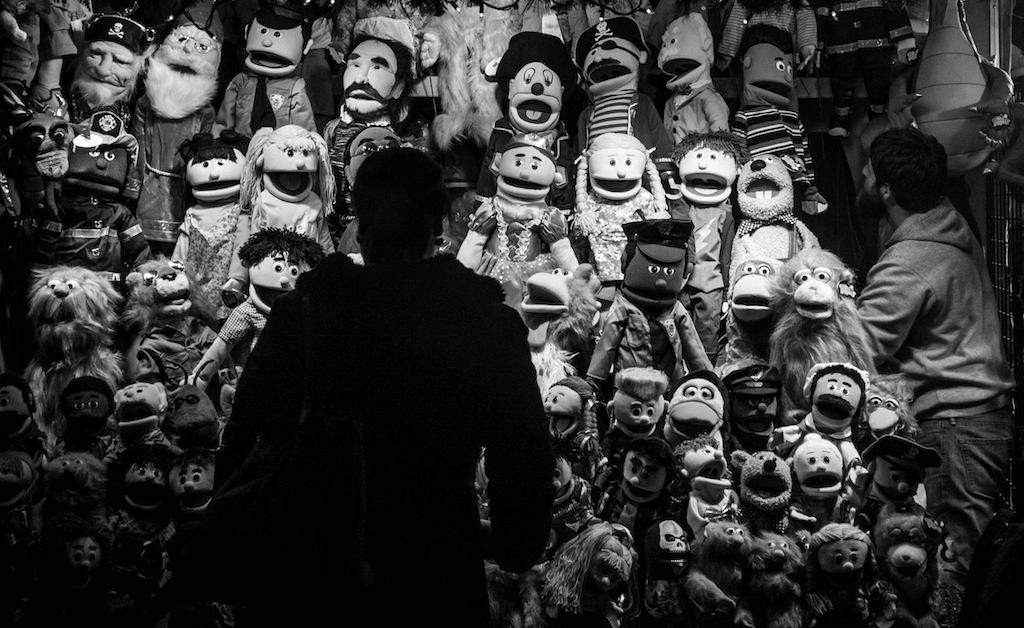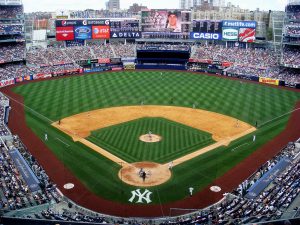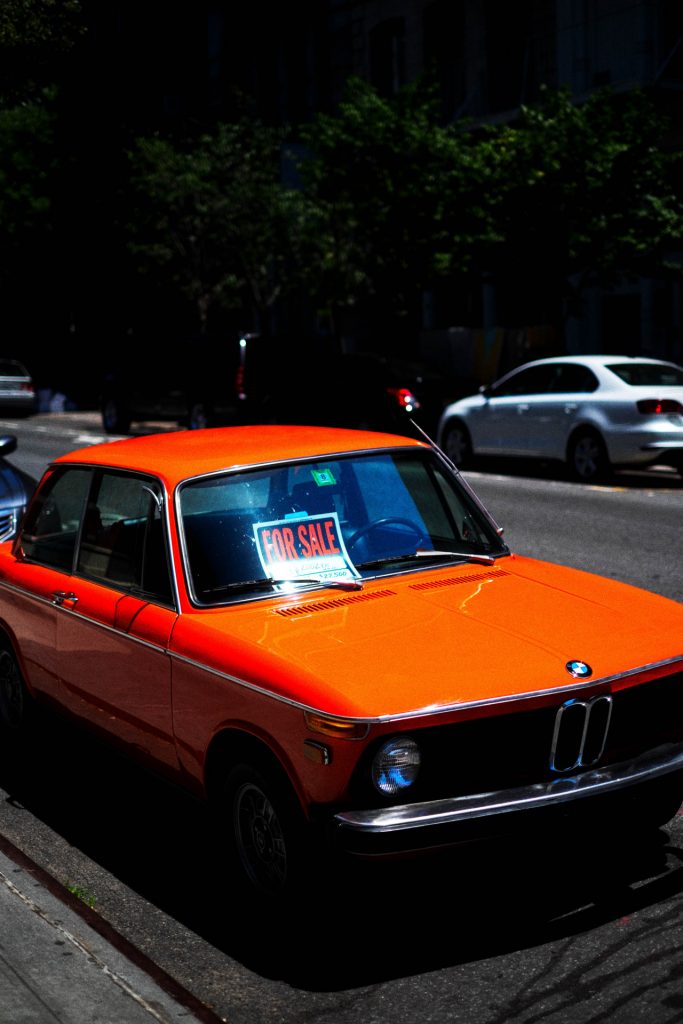
The Yankees played their 100th game of the season last night, and without getting lost in the specific details of that disappointing loss, now seems like a good time to take a look at the broad view of the season. So here are 101 things about the Yankees’ 2025 season. As Vin Scully used to say, pull up a chair.
0
There are many amazing things about what Aaron Judge is doing this season, so this won’t be the last time he appears on this list, but this is perhaps the most amazing. He’s locked in a close race with Cal Raleigh for the league homerun title (Raleigh 38, Judge 36), which isn’t a surprise since he’s led the league in long balls two of the last three seasons. But here’s the shocker — Judge also has a comfortable lead in base hits with 128, outdistancing Bo Bichette, Trea Turner, and Bobby Witt, Jr., who are tied at 113. (One way to understand Judge’s dominance over the rest of the league is to look at the gap between Judge and second place. In this case, he’s thirteen hits ahead of second place, which is the same as the gap between second place and 26th place.) But back to my point. Judge has a chance to lead the league in home runs and hits. If that seems unusual, it’s because it is. It has happened exactly ZERO times in baseball history. This is a pretty special player we’re talking about.
1
This a franchise that always has only one goal — winning the World Series. It doesn’t matter there are people who will get their driver’s licenses this fall who weren’t alive the last time this happened, we all just accept that there is only one mission. Even if the team falls a few games short of this goal, as they did last season, a failed mission is still a failure. That view fuels desperation when there’s a three-game losing streak in May, when the bullpen blows a four-game lead in June, or when Anthony Volpe makes a throwing error in July. It would help to take a breath sometimes before grabbing the pitchforks and lighting the torches. It’s fine to have one goal, but it’s also okay to be measured in our response to the inevitable disappoints that this game with throw our way. (All that being said, I’ve bought in also. During the leadup to the World Series last October, I scoffed at all the Dodger fans I was walking around with t-shirts celebrating their National League Championship knowing that I would NEVER buy a shirt like that. I’m as guilty as the rest of you.)
2
The biggest problem that Anthony Volpe has is Derek Jeter. We were lucky enough to watch a generational player for two decades, inarguably one of the greatest shortstops of all time, and now we’ve got Volpe. Admittedly, he’s been in a funk for a couple months now, and I obviously don’t know how to fix him, but I think he only needs to be fixed a little bit. Dial back the swing in certain situations, hit behind a runner once in a while, and relax some in the field. We don’t need Derek Jeter; we just need Randy Velarde.
3
Volpe and Cody Bellinger are tied for the team lead with three triples.
4
The Yankees are four games behind the Toronto Blue Jays.
5
Giancarlo Stanton has five home runs, and I have absolutely nothing bad to say about him. Nothing.
6
The Yankees have a run differential of +109, better than every team in the American League, and just six runs behind the Chicago Cubs.
7
Aaron Judge leads all of baseball with a WAR of 6.9. (Just a tick below 7, so I’m cheating a bit here.)
8
Paul Goldschmidt and Jasson Domínguez each have 8 homeruns.
9
Infielder Jorbít Vivas has 9 hits.
10
The Yankees are ten games above .500, which kind of tells you all you need to know.
11
Max Fried has eleven wins.
12
Anthony Volpe has made 12 errors this season, leading the team and leading all major league shortstops.
13
D.J. LeMaheiu scored 13 runs before his Yankee career came to end when he was DFA’d earlier this month.
14
Jasson Domínguez leads the team with 14 stolen bases.
15
Carlos Rodón has given up 15 homeruns this season, the highest total on the team. Even so, he’s generally been great, exactly what the Yankees were hoping to get when they signed him three years ago.
16
Only 16 different Yankees have come to the plate this season, a number that seems surprisingly low.
17
Cody Bellinger has 17 homeruns, but that only tells part of the story. He’s been a huge addition to this team, and I hope he sticks around. (I mean, unless Spencer Jones turns out to be the real deal and is starting in center field next year.)
18
Cody Bellinger has 18 doubles.
19
Austin Wells has walked 19 times.
20
Yankee leadoff batters have hit twenty homeruns.
21
Austin Wells has the highest average launch angle on the team at 21 degrees. (Actually 20.9)
22
Yankee third baseman have combined for an OPS of .655, which is 22nd in baseball.
23
It isn’t difficult to imagine a world in which Don Mattingly is the next manager of the New York Yankees.
24
The Yankees have been caught stealing 24 times, tied with the Reds and Red Sox for the tenth highest total in baseball.
25
Oswaldo Cabrera struck out 25 times.
26
As a team, the Yankees have 26 saves.
27
Not including position player Pablo Reyes, the Yankees have used a preposterous 27 pitchers this season. Twenty-seven!
28
Will this be the year the Yankees with their 28th World Series? Only time will tell.
29
Cody Bellinger and Paul Goldschmidt have each walked 29 times.
30
The Yankee staff has 30 wild pitches this season, the thirteenth highest total in the game.
31
Ben Rice has 31 RBIs.
32
Fernando Cruz has appeared in 32 games.
33
Jazz Chisholm has an OPS+ of 133, meaning he’s 33% better than league average.
34
Oswaldo Cabrera played only 34 games before his injury this year, and I really miss him.
35
Tyler Matzek has faced 35 batters.
36
Aaron Judge has 36 homeruns.
37
Paul Goldschmidt has 37 RBIs, good for seventh-best on the time. Probably not what most envisioned.
38
Yankee batters have been hit by pitches 38 times, which is 17th in baseball.
39
Carlos Carrasco has given up 39 hits.
40
Jazz Chisholm has scored 40 runs.
41
Ian Hamilton has 41 strikeouts.
42
Mark Leiter, Jr., has allowed 42 hits.
43
Aaron Judge leads baseball with an OPS of 1.175, which is 181 points ahead of Shohei Ohtani in second place. There’s a similar gap between Ohtani (.993) and Junior Caminero (.812), forty-three spots lower.
44
Ben Rice has scored 44 runs.
45
The Yankees have 45 losses this season.
46
Trent Grisham has scored 46 runs.
47
Will Warren leads the staff with 47 walks.
48
Ryan Yarborough has allowed 48 hits.
49
Devin Williams has 49 strikeouts.
50
Oswaldo Cabrera had 50 at bats at home.
51
Cody Bellinger has 51 hits with the bases empty.
52
Jorbít Vivas has 52 at bats.
53
Anthony Volpe has 53 RBIs, which is fourth on the team. No matter how many times I notice this, it still blows my mind.
54
Ben Rice ranks eleventh in baseball with a 54% rate of balls hit with an exit velocity of 95MPH or higher.
55
The Yankees have 55 wins this season.
56
Cody Bellinger has scored 56 runs, the third highest total on the team.
57
Paul Goldschmidt has scored 57 runs.
58
Yankee pitchers have induced 58 ground ball double plays, which is 25th in baseball.
59
The Yankees won 59 of the first 100 games last year, just four games better than they are right now.
60
Aaron Judge has 60 RBIs when facing right-handed pitching.
61
Based on run differential, the Yankees should have 61 wins instead of 55.
62
Aaron Judge has 62 extra base hits — 24 doubles, 2 triples, and 36 homeruns.
63
Yankee designated hitters have 63 RBIs.
64
The Yankees have stolen 64 bases, tied with the White Sox for 18th in baseball.
65
The Yankees have hit into 65 standard double plays, which is right in the middle of the pack — 15th in baseball.
66
The Yankees have hit 66 homeruns against National League opponents, more than any other American League team.
67
The Yankees have hit 67 homeruns in day games, trailing on the Chicago Cubs, who have hit 70 in six more games.
68
Jazz Chisholm has 68 putouts.
69
Trent Grisham has started 69 games in center field, and he’s been great.
70
Anthony Volpe has struck out 70 times against right-handed pitching.
71
Trent Grisham has 71 hits.
72
Aaron Judge leads the team with 72 walks.
73
Clarke Schmidt struck out 73 batters before his season came to an end.
74
Max Fried has given up 74 hits to right-handed batters. (He’s also been just as good as the Yankees hoped when they signed up this off season. I can’t wait to see what this team looks like when he’s paired with a healthy Gerrit Cole.)
75
Jazz Chisholm has struck out 75 times.
76
Anthony Volpe has 76 hits.
77
Oswaldo Cabrera has fielded 77 chances.
78
Gerrit Cole, Clarke Schmidt, and Luis Gil have combined for 78.2 innings pitched this season, and obviously that’s all from Schmidt, who won’t pitch again for a year or so. If we’re being charitable, we have to admit that it’s remarkable that a team could lose 60% of its projected starting rotation and still be in contention.
79
Max Fried has struck out 79 right-handed batters.
80
J.C. Escarra has 80 at bats. Given his backstory, I’m sure he’s cherished every single one.
81
Austin Wells has appeared in 81 games.
82
Aaron Judge has 82 RBIs.
83
Trent Grisham has appeared in 83 games.
84
J.C. Escarra has an OPS+ of 84.
85
The Yankees have hit 85 homeruns at Yankee Stadium, trailing only the Dodgers (96) for most homeruns at home.
86
Trent Grisham has 86 total bases on the road.
87
Carlos Rodón has struck out 87 batters with the bases empty.
88
Someone named Brent Headrick has appeared in eleven games and posted an ERA+ of 88. If he were sitting right next to me right now I’d never recognize him.
89
Aaron Judge has scored 89 runs, tops in the American League and just five runs behind Shohei Ohtani.
90
BaseballReference.com gives the Yankees a 90.5% chance of making the playoffs.
91
Cody Bellinger has appeared in 91 games.
92
Mark Leiter, Jr., has an ERA+ of 92, which means he’s eight percent worse than league average.
93
Yerry De Los Santos has faced 93 batters.
94
Anthony Volpe has struck out 94 times, which is a huge problem.
95
Aaron Judge has an average exit velocity of 95.2 MPH. Only O’Neill Cruz (96.2) is higher.
96
Max Fried and Will Warren have each given up 96 hits.
97
Cody Bellinger has 97 at bats against left handers, hitting a robust .361 with an OPS of 1.042.
98
Will Warren, #98, has started 21 games, tied for the most in baseball.
99
Probably the best player any of us will ever see wearing Yankee pinstripes.
100
100 games down, 62 to go. Let’s go, Yan-kees!
[Image courtesy of Wikimedia Commons.]




